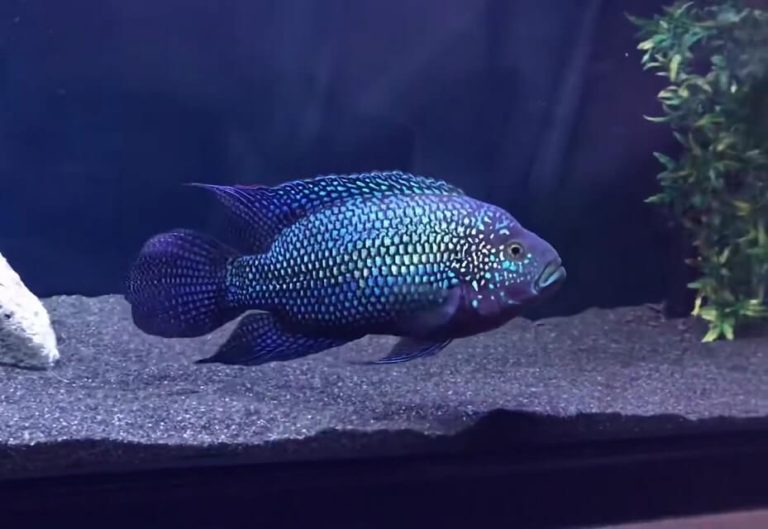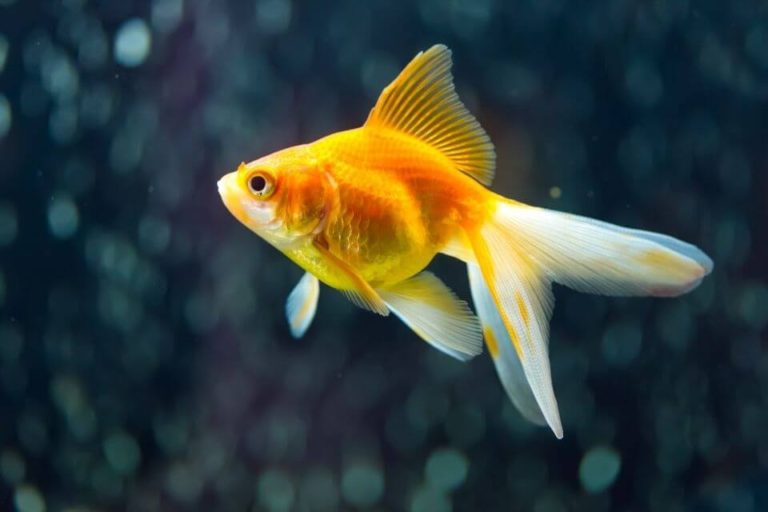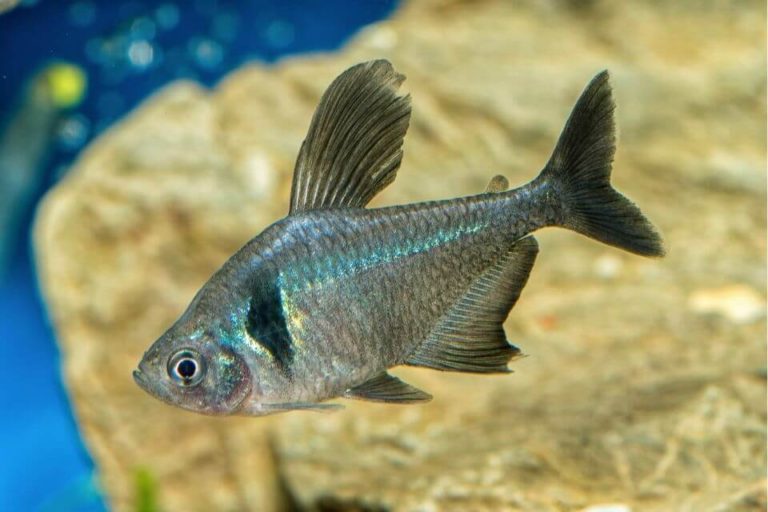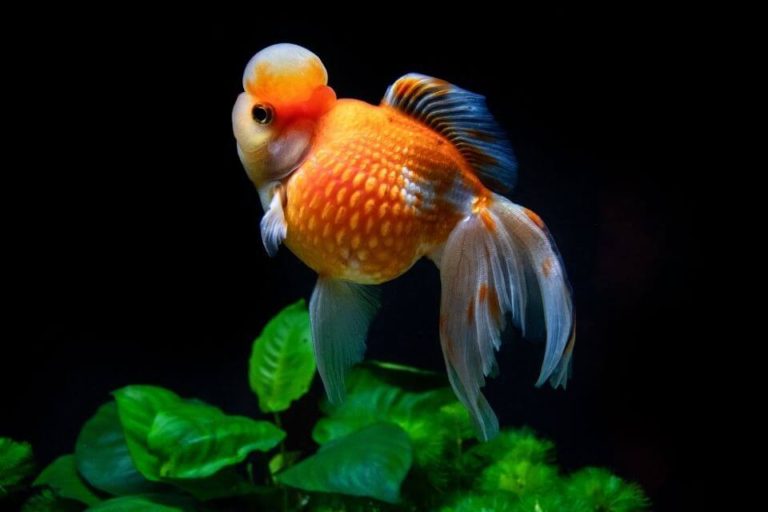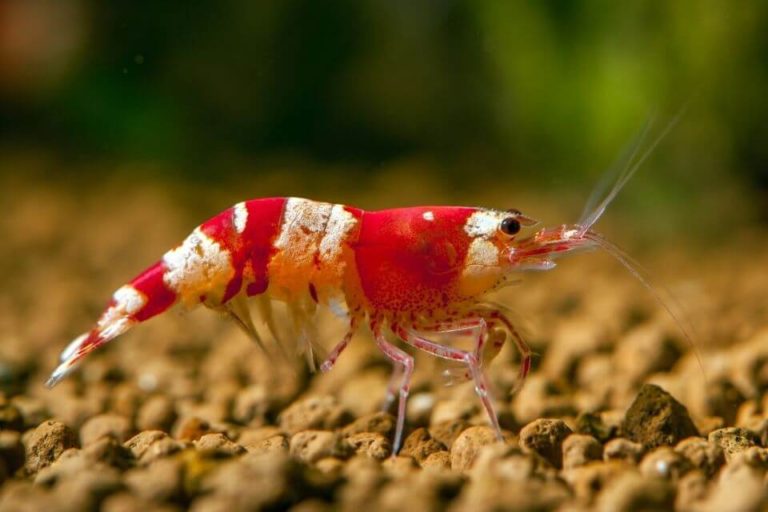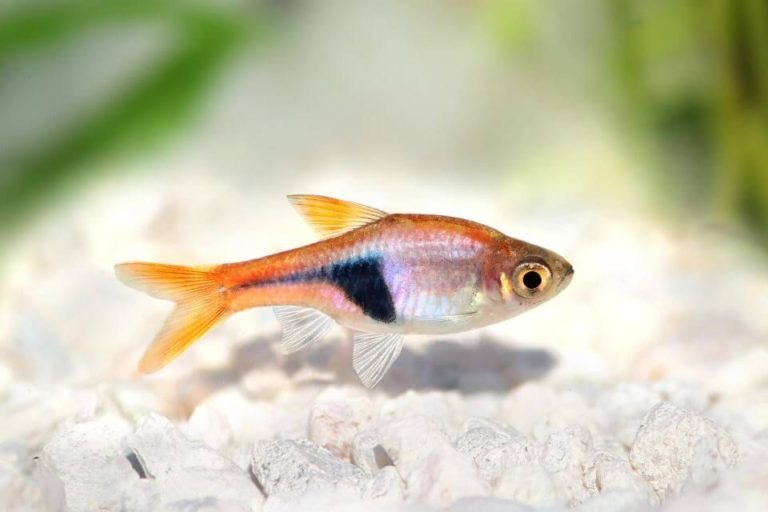Ramshorn Snail Care – Diet, Bredding, Tank Mates, Tank Size and Setup

Ramshorn Snail is a relatively small and peaceful snail known to mind it’s business most of the time. However, among aquarists, these Snail species are a controversial topic; some individuals love them while others hate them.
Usually, some individuals choose to keep these Snails as pets, while others find snails have got into their aquariums as pests.
Nonetheless, keeping a Ramshorn snail as a pet has advantages and disadvantages, and as a result, it is up to you to figure out whether the pros outnumber the cons.
In this Ramshorn Snail care guide, we will be getting a handful of information on caring for these Snail species in your fish tank. Therefore, if you plan on having them as an aquarium pet, by the end of this guide, you will be ready to keep them in your aquarium.
| Quick Facts: | |
|---|---|
| Common Names : | Ramshorn Snail |
| Origin : | Common in every part of the world |
| Family : | Planorbidae |
| Scientific Name : | Planorbarius Corneus, Planorbella Duryi |
| Care Level : | Easy |
| Temperament : | Peaceful |
| Social : | Community friendly |
| Diet : | Omnivores |
| Size (average) : | Up to 1.5 inches |
| Lifespan : | Up to 3 years |
| Breeding : | Egg layer |
| Minimum Tank Size: | 5 gallons |
| Tank Environment : | Freshwater, Gravel or hard substrate, Live plants or Artificial plants, Rocks and Driftwood |
| Temperature : | 70°F – 78°F (21 – 25 °C) |
| Water Hardness : | 5 – 15 dKH |
| Water pH Level : | 7.5 - 8.5 |
Species Overview
When it comes to the aquarium trade, Ramshorn snails are a group of snails that have Coil shaped shells. There are two common species Planorbarius Corneus and Planorbella Duryi are commonly known as Ramshorn Snails in the aquarium trade.
Anyhow both species fall under the “Planorbidae” family of snails. Their shape and appearance make them an excellent addition to an aquarium.
These snails are fairly nice, come in various colors, and are relatively easy to care for. Despite the fact that aquarists have mixed opinions about whether Ramshorn snails should be considered a pet or a pest, they remain ideal for enhancing your aquarium’s beauty.
Furthermore, whether you want to keep it or not comes down to your personal preference.
Ramshorn Snail Size
This Ramshorn Snail size is relatively small; however, its shell is known to grow up to an inch in diameter. At times you can find Giant Ramshorn snails or Columbian Ramshorn snails with shells that reach up to 1.5 inches.
In fact, you can tell the age of a snail by the thickness and size of its shells. The thicker and larger a shell is, the older a snail tends to be.
Ramshorn Snail Lifespan
An average Ramshorn Snail lifespan is between 1 to 3 years. However, a Ramshorn Snail will only live for this long if it is kept in captivity with the right conditions and care.
In fact, there are few instances where Ramshorn Snails have been reported to live for more than above mentioned periods; however, this is rare.
Origin and Distribution
Ramshorn snails are cosmopolitan in terms of distribution. There are various Ramshorn snail species living around the world, and they are found on most continents.
However, most of the Ramshorn snails available in today’s market are bred in captivity. Pet shops that deal with aquatic snails will likely stock Ramshorn snails so that you can find one with the utmost ease.
The origin and distribution of Ramshorn snail will highly depend on the species type. Different Ramshorn snails originated and resided in different parts of the globe.
Appearance and Colors
The Ramshorn snails found often found in two main colors; red and black. Usually, red is fairly uncommon among snails because most snails tend to produce green hemoglobin resulting in green blood.
However, on the other hand, the Ramshorn snails have red hemoglobin giving them a red color.

On the other hand, Black snails are known to have melanin in their skin that results in dark pigmentation. The Red Ramshorn snails do not have this pigment resulting in red skin from the color of their blood.
Furthermore, selective breeding has led to creating a blue Ramshorn snail and a pink Ramshorn snail. However, these snails are very rare. A blue and pink Ramshorn snail offspring will likely resemble their wild forms.
The color of their shells tends to vary significantly from an almost completely black shell to translucent. These differences often occur due to the different diets they consume.
Due to this, most Ramshorn snails found in the wild or in ponds have darker shells; this is because what they consume in these environments is not found in an aquarium.
Relatively old snails are also known to have darker shells. The shape of the shell is circular and spiral sinistrally, meaning that their openings are slanted towards the right. Ramshorn snails, along with other air-breathing snails, do not have an operculum.
Ramshorn Snail Care
As stated earlier in the article, taking care of a Ramshorn snail is relatively easy. These snails do not require much, and they will pretty much take care of themselves.
When it comes to taking care of a Ramshorn snail, you will need to factor in an array of vital aspects, and with the right care, you will be able to enhance the longevity of your snail.
Here are the vital aspects you will need to consider when taking care of a Ramshorn Snail;
– Ramshorn Snail Tank Size
For Ramshorn Snail tank size, there is no specific tank size and they will do well in almost any tank size, from a relatively small 5 gallons tank or 10 gallons tank to a much bigger one.
Despite the fact that Ramshorn snails are not escaped artists like most snails, it is highly recommended that you keep the top of your tank covered to minimize the chances of escaping.
– Ramshorn Snail Tank Setup
Tank setup is a vital consideration when having a Ramshorn snail as a pet. Although sand substrate can be used in the tank, rock and gravel are considered the best option. This is because they find it challenging to grip the sand and then propel themselves forward.
Furthermore, loose substrate and the snail’s heavy shell pose a great danger to these relatively small snails. It is for this reason we recommend you to use heavier substrates such as rock and gravel to make them comfortable.
Having a tank with no substrate or a bare bottom tank is also considered an excellent choice. However, the downside of having a bare bottom tank is that you will have no substrates for the snail’s waste to hide. And as a result, your tank will require extra cleaning.
When it comes to lighting, these Snails do not need a light source. They are known to be happy in areas with low lights as they are in places with ample light. Although they might not need ample light, these snails are known to benefit from objects for slithering and climbing on.
Therefore, you should decorate your tank with large rocks, artificial décors, and driftwoods to give your snail an enrichment source and exercising platform.
Usually, Ramshorn snails require a filter, and a sponge filter is considered the safest option for use, though you can work out with any type of filter.
This is a vital point to note since Ramshorn snails are very curious, and at times, they can be caught in a filter intake. Therefore, it is highly essential that you cover the filter’s intake with a fine mesh or a sponge.

– Water Parameters
To enhance the longevity of your snail and protect it against diseases, you will need to ensure that the water parameters are achieved correctly.
First and foremost, the pH level of water for your Ramshorn snail should not be acidic. A basic pH of 7.0 is considered the lowest that Ramshorn snails can tolerate. Adding a small amount of calcium to the water can be beneficial; however, ensure that the pH is between 7.5 to 8.5.
In addition to the pH levels. The water temperature should be between 70 and 78 degrees Fahrenheit (21 to 25 degrees Celsius). The water should also be hard and should maintain the range of 5 to 15 dKH.
– Suitable Aquarium Plants
You can use both artificial and live plants in an aquarium with Ramshorn snails. These snail species are known to feed on detritus or decaying plant matter when it comes to living plants.
Furthermore, a live plant is known to absorb nitrate, which helps clean the water. You can only use artificial plants if you have proper filtration along with proper feeding.
You can you almost any live aquarium plant at your preference, also we have some recommendations as below;
– Common Diseases and Prevention
With the Ramshorn snail, it is not what common disease they suffer from but what diseases they will bring into your tank. Ramshorn snails are known to be resilient and major infections are not a huge problem for them.
Nonetheless, these snails are known to be notorious for bringing disease into a community tank.
Whenever you purchase a Ramshorn snail from a pet shop, their skin might have parasitic infections. Usually, this is because snails are perfect hosts for parasites.
To worsen the situation, they are relatively challenging to spot, and as a result, you might not even realize you are putting your fish at risk until it is too late.
When getting a new Ramshorn snail out in your aquarium, it is highly recommended that you put it in a quarantine tank for approximately one month in order to ensure you are not putting your fish at risk.
This is a vital point you need to note if you plan to have a Ramshorn snail as a pet.
Diet and Feeding Requirements
The Ramshorn snails are known to spend most of their time searching for algae in the aquarium to feed on. It is a fun thing to watch your snail scouring the aquarium for something to indulge in.
In addition to algae, Ramshorn snails love feeding on decaying plant matter. These snails will feed on leaves that fall off from your aquatic plants.
Furthermore, they will feed on dead shrimp and fish when they have the chance. However, it is recommended not to leave dead critters in an aquarium since it can result in a severe water problem.
You can as well supplement your snail’s diet with some commercial foods as well. They indulge in almost all organic matter, both living or dead.
These snails will also feed on leftover fish pellets and flakes at the bottom of your aquarium. You might as well consider feeding them algae wafers along with calcium fish supplements. This is vital for strengthening their shells.
Gender Differences
Most snails are Hermaphrodites, meaning that they possess both female and male sexual organs and Ramshorn snails are no different. Therefore, you cannot tell gender differences in Ramshorn snails as they possess both sexual organs.
Ramshorn Snail Breeding
When it comes to breeding Ramshorn snails, it requires very little effort on your part. In fact, this will occur without your intervention, and you will not be able to stop the process.
And although Ramshorn snails are hermaphrodites, they cannot self-fertilize. They will need to mate with other Ramshorn snails in order to produce offspring.
Usually, a single-sex organism is looking to produce they will require to find a mate of the opposite sex. However, Ramshorn Snails can mate with any member of their species. They do not have to waste time searching for the opposite sex. They can also do as they please.

When two Ramshorn snails copulate, the one with the fertilized egg will lay eggs. In most cases, these eggs are laid on the underside of a plant, rock, driftwood, and tank wall. Since these eggs are translucent, seeing them can be relatively challenging.
Once the eggs are laid, they will hatch after two weeks. The newborns are then able to fend for themselves upon hatching, and they do not require any extra care.
Behavior and Temperament
Ramshorn snails are very peaceful. They are known to stay out of the way of other creatures and focus more on finding food. Due to their incredible temperament, Ramshorn snails can be kept together with several tank mates, and that will be required of you to keep them away from snail-eating animals.
The only things that will be at risk from Ramshorn snails are delicate plants. These snails at times nibble at plants; this often happens when they cannot find food to feed on.
And although they move slowly, the Ramshorn snails spend most of their time exploring the aquarium for food. And you will often spot them on different surfaces around.
Ramshorn Snail Tank Mates
Ramshorn snails are, without a doubt, very peaceful creatures, and they live peacefully with various creatures out there. Usually, when threatened, these snails will retreat their shells for protection. Some of the good tank mates for the Ramshorn snails include.
Freshwater fish species such as
- Otocinclus Catfish
- Guppies
- Cory Catfish
- Honey Gourami
- Chili Rasbora
- Black Neon Tetra
- Odessa Barb
- Silver Tip Tetra
Other snails include;
- Ivory Snails
- Nerite Snails
- Japanese Trapdoor Snails
- Gold Inca Snails
- Trumpet Snails
- Mystery Snails
Aquarium shrimps such as;
- Vampire Shrimp
- Bamboo Shrimp
- Ghost Shrimp
- Amano Shrimp
- Red Cherry Shrimp
You should avoid keeping Ramshorn snails in the same aquarium with very aggressive crustaceans or fish species. Goldfish or Cichlids, along with other aggressive fish, can be very harmful to these defenseless snails.
Hammers Cobalt Blue Lobster, along with Tangerine Lobster, are some aquarium crayfish that are not perfect tank mates with Ramshorn snails since they can capture them and feed on them.
Frequently Asked Questions
We found out few questions that people looking for answers to and include below for your benefit.
How Quickly Do Ramshorn Snails Grow?
Ramshorn snails are said to grow rapidly at the age of 4 to 6 weeks and multiply readily. These snails are known to grow up to 1 to 1.5 inches.
Can Ramshorn Snails Reproduce Asexually?
Although Ramshorn snails are hermaphrodites, they cannot reproduce asexually. However, according to hobbyists, snails are asexual, and often they produce small clones of themselves.
Although snails are capable of fertilizing their eggs, this area is understudied in Ramshorn snails, and they are often considered not asexual species.
Are Ramshorn Snails Bad?
This will come from personal preference. Some aquarists love having Ramshorn snails as a pet, while others see them as a pest. The only downside of having a Ramshorn snail in your aquarium is that they are likely to host and infect other pets with parasitic infections.
Can Ramshorn Snails Live Out Of Water?
Although Ramshorn snails are aquatic snails, they also breathe air through the lungs. This means that they can survive outside water for a few hours.
Can Ramshorn Snails Live On Land?
Aquatic snails cannot survive outside water for an extended period, and the Ramshorn snail is no different. Although they have lungs that allow them to breathe outside water, their bodies will dry easily when living on land.
They can only survive on land for a few hours.
Where Are Ramshorn Snails For Sale?
Ramshorn snails can be found in your local pet stores that sell aquatic snails. In fact, they are very affordable and are often sold in a group.
What Is The Average Ramshorn Snails Price?
When sold in groups, the average price for a Ramshorn snail is $5 for ten snails. At times the price can be lower than $5. Their price differs significantly when they are selectively bred for a certain appearance.
The other factor for prices is the region that you reside in, the prices may vary based on your location.
It’s Time To Decide
If you are planning on having a Ramshorn snail as an aquatic pet, adhering to the tips discussed in this Ramshorn Snail care guide will help in ensuring that your snail lives a healthy life and attain its life expectancy of one year.
With that said, we hope that you have found this article beneficial. Now now you can decide whether you bring them to your aquarium or not. But do not miss this chance to decorate your fish tank with this beautiful aquatic creature.
We would like to have your thoughts and feedback in the comment section below. Feel free to ask any questions if you have about this species.


